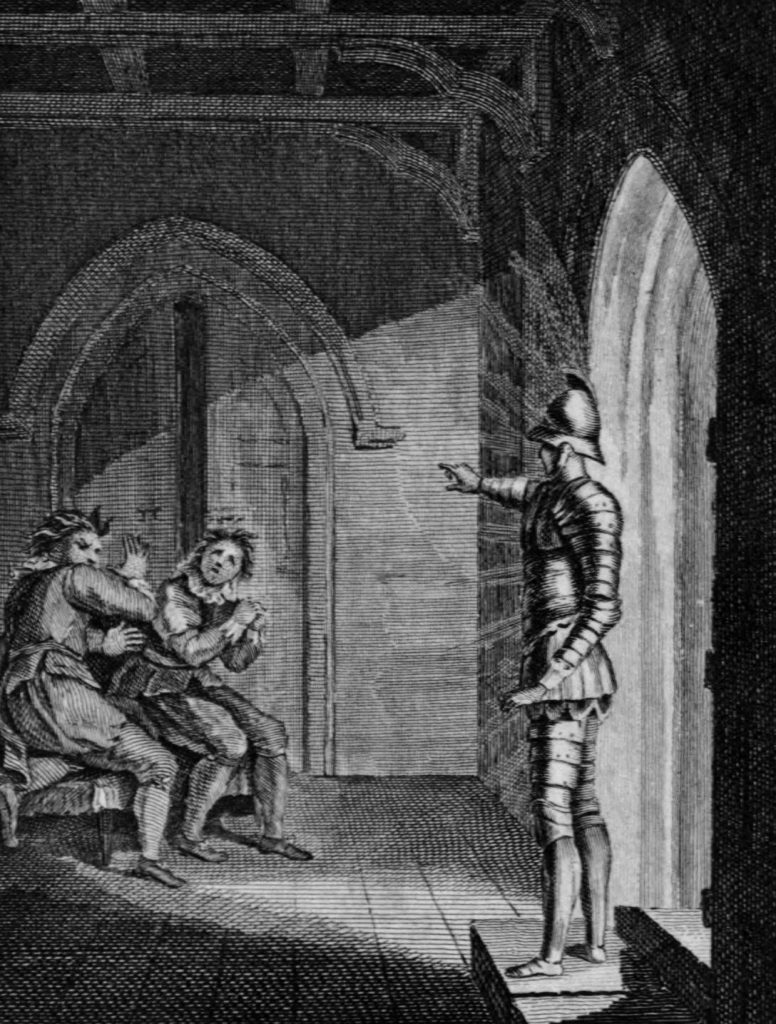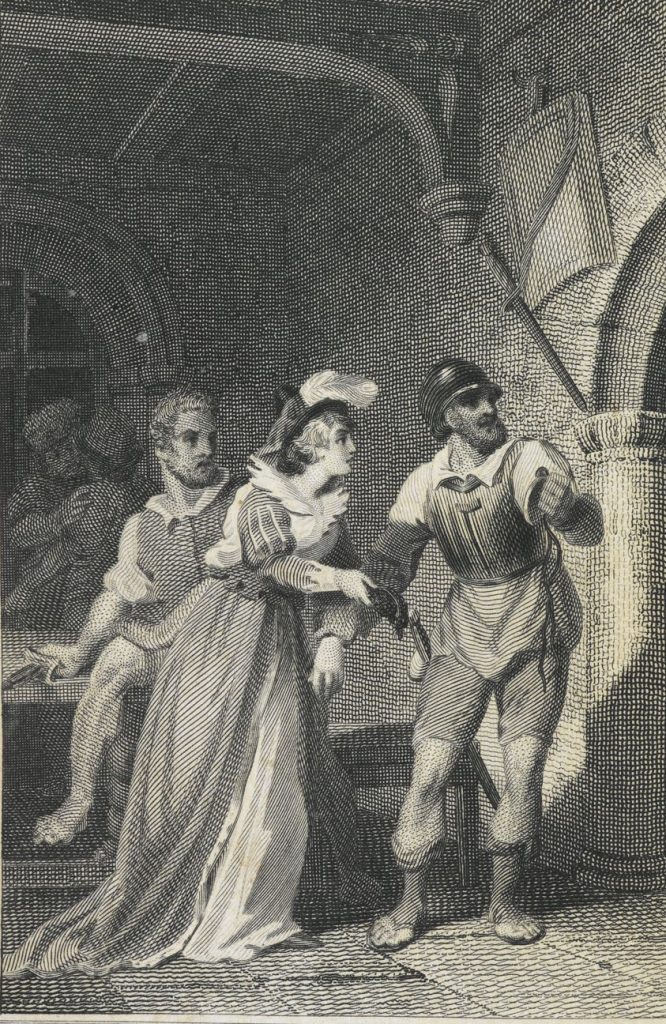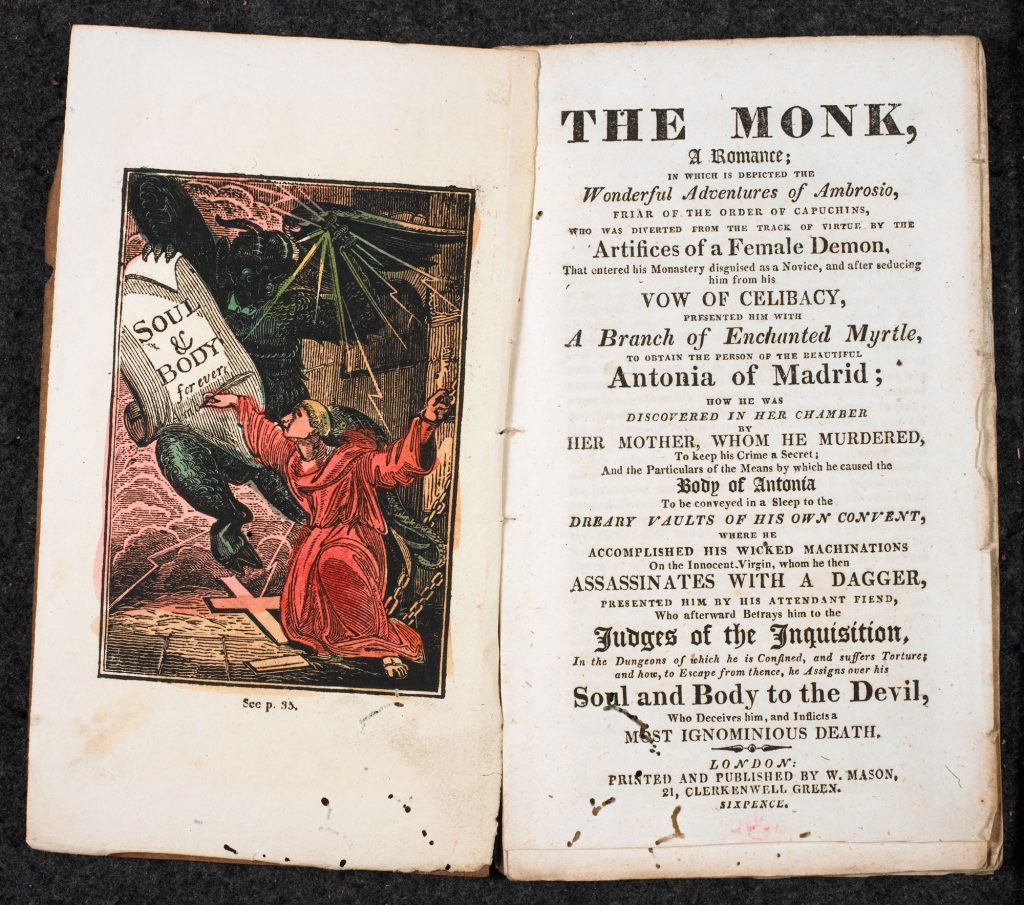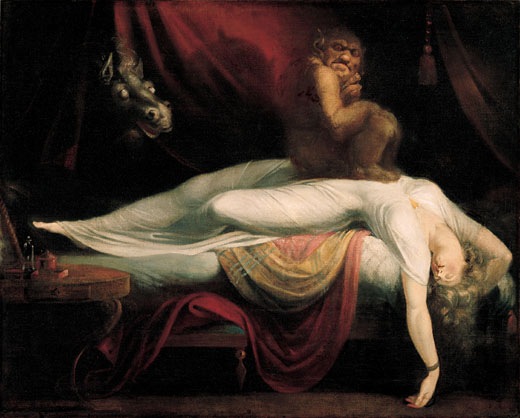Vampires, haunted castles and tyrannous villains are all elements we’ve come to associate with Gothic literature. Today, the Gothic genre remains firmly embedded in popular culture, illustrated by the popularity of Gothic writers like Angela Carter, and the continuing demand for horror films. But where did Gothic literature originate?
Throughout the 18th century, the phenomenon of the Gothic emerged and flourished across Britain. With its emphasis on suspense and the supernatural, terror and the macabre, the Gothic was heralded as a “medieval revival” that stood against the Enlightenment’s focus on reason. While we’re familiar with later Gothic texts including Mary Shelley’s Frankenstein and Bram Stoker’s Dracula, here are some of the 18th century texts that shaped the origins of Gothic literature.

The Castle of Otranto, Horace Walpole (1764)
Horace Walpole’s tale of tyranny and mystery is often hailed as Britain’s first Gothic novel. The story follows Manfred, the Prince of Otranto, who, in order to ensure an heir to his estate, decides to arrange a marriage between his only son, Conrad, and the aristocratic Isabella. However, in a dramatic turn of events, Conrad is crushed to death by a large helmet before the wedding. Desperate to produce an heir, Manfred attempts to pursue and impregnate Isabella, prompting a series of supernatural events.
When it was first published in 1764, the work claimed to be a translation of a medieval Italian manuscript that was ‘found in the library of an ancient Catholic family in the north of England.’ But, when Walpole disclosed his authorship in the second edition, the work’s initially positive reviews became less favourable. Walpole’s literary hoax inspired many other 18th century works to adopt this idea of the “discovered” ancient manuscript to drive their narratives. The Castle of Otranto also influenced several elements of Gothic fiction with its accounts of mistaken identity, labyrinthine passages and ancient castles.

The Old English Baron, Clara Reeve (1777)
Written in response to The Castle of Otranto, Clara Reeve’s story The Old English Baron draws upon Gothic elements, but in a more muted fashion. While supernatural occurrences feature throughout her work, Reeve explains that these try to remain ‘within the utmost verge of probability.’
Reeve’s tale of usurpation was first published anonymously in 1777 under the title The Champion of Virtue, and was reissued as The Old English Baron in 1778, with Reeve’s name included on the title page. The story follows the tribulations of Edmund, who has been dispossessed of his inheritance by his malicious uncle. Featuring battles, jousts and chivalric feats, Reeve’s story locates the Gothic within the familiar context of England’s medieval past.
While The Old English Baron is little-known today, the work was immensely popular with 18th and 19th century readers. So much so, that by the end of the 19th century, the work had been published in at least nineteen editions.

Vathek, William Beckford (1786)
Filled with sorcery, debauchery and eroticism, William Beckford’s work focuses on the hedonistic exploits of the Caliph Vathek, who is aided by a terrifying Giaour (evil magician). Loosely based on the 9th century ruler Caliph Al-Wathiq, Vathek taps into the 18th century’s fascination with Orientalism. This movement gained popularity following the first ever translation of the Arabian Nights by the French writer, Antonine Galland. Published between 1704-1717, Galland’s work was quickly translated into most European languages.
Like The Castle of Otranto, Beckford’s story also claims to be a translated manuscript, which was ‘collected in the East by a man of letters.’ The Caliph Vathek’s ruthless pursuit of his desires and ambitions ensured that he became a model for later Gothic villains. Beckford’s oriental tale even inspired Lord Byron’s popular poem The Giaour, A Fragment of a Turkish Tale (1813).

The Mysteries of Udolpho, Ann Radcliffe (1795)
One of the most prolific Gothic novelists, Ann Radcliffe’s tales of terror captivated 18th century readers. Over the course of her lifetime, “the Great Enchantress” wrote several Gothic romances, including The Romance of the Forest (1791) and The Italian (1797), but it was her thrilling work The Mysteries of Udolpho, that established Radcliffe as a leading Gothic writer.
Set amongst the foreboding Apennine Mountains, The Mysteries of Udolpho follows the orphaned heroine, Emily, who is left to the mercy of her malevolent uncle, Montoni. Imprisoned in her uncle’s castle of Udolpho, Emily soon finds herself plagued by wild torments and dangers.
Filled with brooding mountains, foreboding forests and tremendous precipices, the landscape of The Mysteries of Udolpho draws upon Edmund Burke’s theory of “the sublime” – a common motif of Gothic literature. Set out in his work A Philosophical Enquiry into the Origin of our Ideas of the Sublime and Beautiful (1757), Burke described the concept of “the sublime” as the feeling of awe and terror experienced when confronted by something powerful.

The Monk, Matthew Lewis (1796)
With its shocking descriptions of rape, massacres and incest, Matthew Lewis’s The Monk caused a scandal upon publication. Loved by the public, but condemned by literary critics, The Monk introduced readers to the realms of horror, which marked a key development in the history of Gothic literature.
Lewis’s controversial tale exposes the diabolical influence of power, and centres on the obsessive desires and downfall of Ambrosio, an abbot of a monastery in Madrid. Written in an age that was fiercely anti-Catholic (Britain had defined itself as Protestant ever since the Act of Union in 1707), The Monk taps into 18th-century ideas about the corrupt nature of Catholicism. The work’s emphasis on mob violence and institutional constraints, also touched on anxieties surrounding the threat of a British revolution, after the turbulence of the French Revolution (1789-1799).
Following the publication of The Monk, Lewis was subject to intense criticism. The writer, Thomas James Mathius, argued that the work was ‘open to legal action’ due to its blasphemous content. Samuel Taylor Coleridge attacked The Monk for its corrupting influence on the young, stating that if a parent were to see it: ‘in the hands of a son or daughter, he might turn reasonably pale.’
Lewis removed several of the work’s notorious passages in later editions, but the scale of the controversy, combined with Lewis’s new status as Member of Parliament, ensured The Monk‘s popularity.
Featured image: Henry Fuseli The Nightmare. 18th century. Image sourced from Tate Britain.

